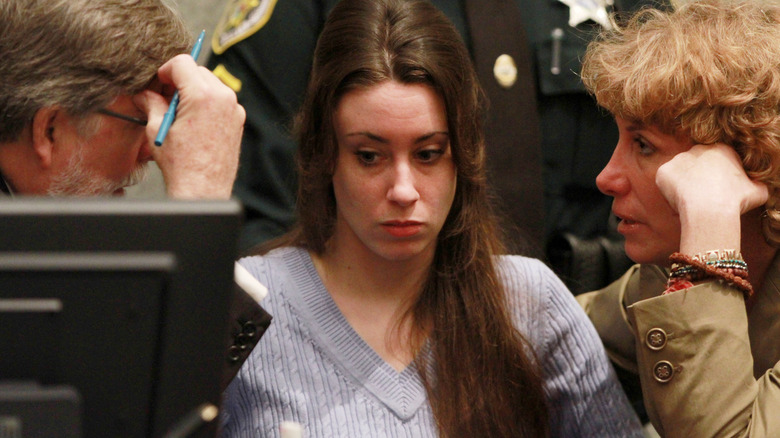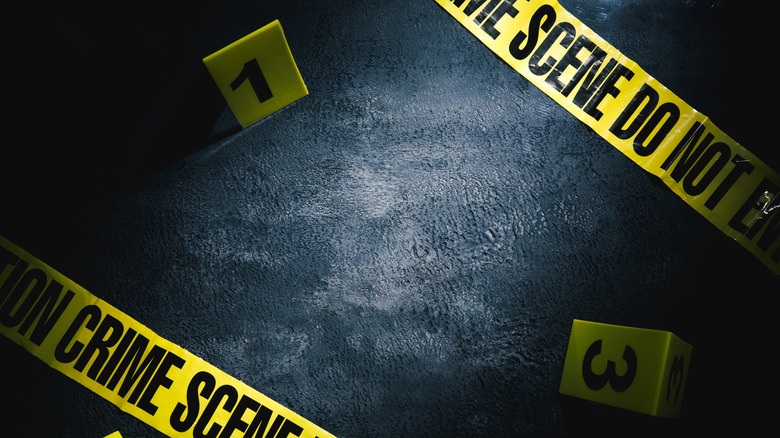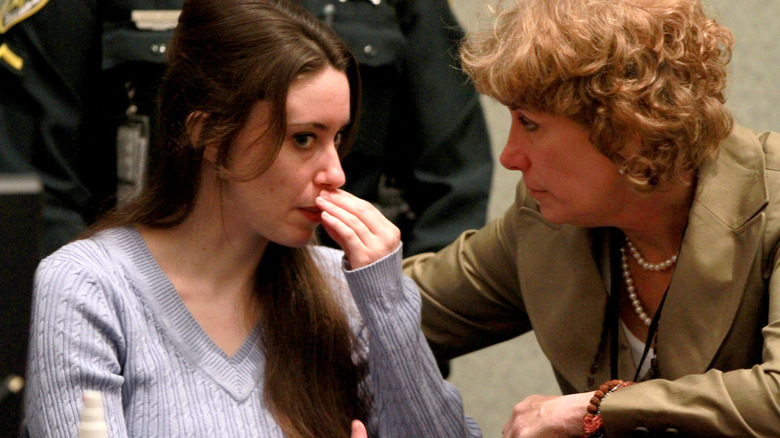What Police Found At Caylee Anthony's Crime Scene
Jurors in the Casey Anthony case seemed to know that their verdict would be controversial. Four different jurors spoke to the press, all offering qualifications on the decision to find Anthony not guilty of murdering her daughter Caylee. None sounded happy with the verdict, and at least one avowed that, had the jury gone on its feelings alone, they would have found Anthony guilty. But the jurors all maintained that the prosecution failed to present enough compelling evidence to establish that Caylee was murdered beyond a reasonable doubt.
Not that evidence hadn't been presented, or that certain facts weren't established. Human child remains were found in the woods near the Anthony family's home in Orange County in 2008: a skull with duct tape over the mouth, a trash bag containing additional remains, a Winnie the Pooh blanket that had belonged to Caylee, and the remnants of a child's shirt and shorts. The Anthony house was searched for fiber and tissue samples. To that end, a vacuum cleaner and a pillow were confiscated. Police also found duct tape in the Anthonys' shed — of the same brand as that found on the skull. The evidence recovered was solid enough for authorities to confirm to the Orlando Sentinel that the remains belonged to Caylee Anthony, ruling out any hopes of her survival after being missing for over six months.
There was suspicious evidence in Casey's car trunk
Among the many suspicious circumstances that led authorities to suspect Casey Anthony of her daughter's murder was the mystery of her car. After she had been missing for over a month, Casey's mother Cynthia reported her to 911 for stealing money and a car. Said car was found and towed away, but an hour after her first call, Cynthia found out Caylee had been missing for a month and reached out to 911 again. "There's something wrong," she said through tears (via CBS News). "I found my daughter's car today, and it smells like there's been a dead body in the damn car."
The car, a white Pontiac Sunfire, did not have a dead body in it. But Cynthia's description of the smell was echoed by others. An odor analysis found seven compounds in the trunk of the car consistent with human decomposition, with five in sufficient quantities to be considered as evidence. The same team detected indications of chloroform in the carpet of the trunk at levels Dr. Arpad Vass — who was involved in the investigation — said were "shockingly ... unusually high" during testimony (via CNN).
Human hair was also found in the trunk, and researchers determined that it showed signs of decomposition. It was similar in appearance to Caylee Anthony's hair, but could not be conclusively proven to be hers, and DNA could not be pulled for a more conclusive analysis.
The evidence wasn't enough for the jury
Alina Burroughs — a crime scene investigator who took one of the 911 calls about Casey Anthony and performed search warrants on the family's home — told People that she found the evidence that a dead body had been kept in Anthony's trunk conclusive. If it could be proven so to a jury, that would be a huge setback to her claims. Notably, Anthony said in a 2022 interview that she fled in her car while her father George disposed of Caylee's body after she was alleged to have died from drowning. Burroughs was also convinced by the behavior of the police cadaver dogs and by the fact that Anthony borrowed a neighbor's shovel after Caylee's disappearance.
But by the trial's end, the jury still wasn't convinced. Juror Jennifer Ford told ABC News that there were significant gaps in the prosecution's story. She specifically cited the lack of a logical explanation for how, despite the traces of chloroform in the trunk, Anthony could have poisoned her daughter and put her in the trunk without being seen. The evidence also didn't satisfy questions of motive. "If you're going to charge someone with murder, don't you have to know how they killed someone or why they might have killed someone, or have something where, when, why, how?" Ford asked rhetorically.


